Smart glasses are expected to gain a lot of momentum as “wearable computing” takes root in the consumer market. A lot of the details, like how to protect privacy in a world full of smart glasses, still have to be worked out.
Sales of the devices could grow from 87,000 in 2013 to more than 10 million a year by 2018, according Juniper Research.
As you can see from the shipping dates, many of these devices aren’t ready yet. It may pay to wait, as prices come down and more models become available. Samsung is rumored to be moving into the market, but details aren’t available now.
We’ve round up the details on 16 of the announced models so far. Take a look and vote for your favorite.
Connect with leaders from the companies in this story, in real life: Come to the fourth annual VentureBeat Mobile Summit April 14-15 in Sausalito, Calif. Request an invitation.
 Google
Google
Product: Google Glass
Price: $1,500
Timing: Available now
Features: High-resolution display equivalent to a 25-inch HD screen from eight feet away. Camera that can take 5 megapixel photos and 720p videos. It has a bone conduction transducer for audio. It has 802.11b/g WiFi and Bluetooth. Glass has 12GB of usable memory. The battery lasts for a day under typical use. It has a micro USB cable and charger.
Atheer Labs
Product: Atheer One
Price: $500
Timing: December 2014
Features: It has dual 8-megapixel cameras. Sports a 65 degree field of view. Operates on 5 milliseconds of latency. Expected weight is 75 grams. It will have a touchscreen and an ARM processor. It has a depth sensor, phone connection, and interchangeable lens.
EmoPulse
Product: nanoGlass-4
Price: TBA
Timing: $25
Features: The display resolution is 320 x 240, and, as such, it is an inexpensive foray into smart glasses. It has Bluetooth 4.0 and a lithium battery that allows for two days of intensive use or seven days in power-saving mode. The user interface makes use of seven colors. Blue colors light when you receive a text message. It connects to the phone via wireless Bluetooth 4.0.
Epson
Product: Moverio BT-200 smart glasses
Price: $700
Timing: March or April
Features: The Moverio has a dual screen for a 3D, transparent display (with a resolution of 960 x 540 pixels); a front-facing camera which can capture video or detect markers for augmented reality apps; head-motion tracking sensors; a gyroscope; accelerometer (for measuring motion); magnetic compass sensors; and a separate, smartphone-sized touch-sensitive control unit with Wi-Fi, Bluetooth 3.0 and Android 4.0. It has native support for MP4, AAC encoding, and H.264 video playback. It has a MicroSDHC card slot that supports up to 32GB of external memory.
University of Toronto
Product: EyeTap
Price: N/A
Timing: N/A
Features: EyeTap uses your eye as both a display and a camera. It shows computer information to the user and allows them to view a “computer-mediated reality,” or augmented reality.
GlassUP
Product: GlassUp
Price: $299 to $499
Timing: TBA
Features: Weighs 20 grams. It works via a Bluetooth LE connection with your phone and supports Android and iOS. Battery is expected to last for a day and recharges via micro-USB. Its sensors include an accelerometer, compass, and ambient light sensor. It has a touchpad for controls. Basic version has no camera or prescription lenses, while prescription lenses and a camera will cost $499.
Innovega
Product: iOptik
Price: TBA
Timing: TBA
Features: iOptik is a contact lens that can display images to your eye with a wide field of view. It is good for watching immersive, wide field of view movies or playing 360-degree video games. Innovega licenses the technology to other manufacturers who will ship consumer products. You can see the outside world through the lens for augmented reality applications, or the lens can block light as needed.
KAIST University
Product: K-Glass
Price: TBA
Timing: TBA
Features: The head-mounted display device can recognize objects and tell you what you’re looking at. It is a wearable, hands-free display created by students at the Korea Advanced Institute of Science and Technology. It delivers an augmented-reality experience, like show you how many tables are open a a restaurant and images of the kinds of dishes served. The device runs at 250 megahertz and uses a 1.2 volt battery. It uses a real-time augmented reality processor, it has a touchpad interface, a five-megapixel camera, and an 800 x 600 micro display.
LaForge Optical
Product: Acis
Price: $820 for beta version; $200 for final.
Timing: Mid-2004
Features: Six-hour battery life. Designed to look like a normal pair of glasses. It has prescription eyewear that displays notifications from your phone. It has a camera, microphone, and speaker. It will come in a variety of glasses styles. You control it with a touchpad on the side.
News: Laforge was in the midst of a successful crowdfunding on Indiegogo but decided to end the campaign thanks to interest from investors.
Lumus
Product: DK-40
Price: TBA
Timing: TBA
Features: Lumus uses Light-guide Optical Element technology, which can display a high-quality image using a transparent lens. It uses a mini projector to display high-definition 720p images in front of your eyes, creating the effect of watching a large virtual image on a transparent screen. It has a 5-megapixel camera. The display has a 25-degree field of view, an onboard OMAP processor running Android, an embedded depth-of-field motion sensor.
Meta
Product: Meta Pro
Price: $3,650
Timing: September 2014
Features: It has a 40-degree field of view with a screen area that is 15 times the screen area of Google Glass. It lets you view a giant, 3D holographic HD screen, which can display 1280 x 720 pixel images for each eye. It has twin RGB cameras, stereoscopic 3D, 3D surround sound, 3D time of flight sensors, and a 9-axis integrated motion unit with accelerometer, gyroscope and compass.
Pivothead
Product: Pivothead Smart
Price:
Timing: May 2014
Features: It has a centered camera that can take 8-megapixel images or record 1080p high-definition video. The camera has autofocus and you can save data on 16GB of internal memory. It can connect via Bluetooth 4.0, NFC, or WiFi. It sends notifications to your display. It has a an ARM processor that runs Android apps, 4GB of random access memory, and a slot of Micro SD storage. It has a connector for micro USB, it has an audio out jack, and a microphone. It has mods that can add new capabilities such as global positioning system navigation. The battery can last for 180 minutes while recording video.
Recon Instruments
Product: Recon Jet
Price: $499
Timing: available
Features: Recon Jet has a consumer heads-up display for sports. Its sensors include 3D magnetometer, a gyroscope, and an accelerometer. It has a pressure sensor, ambient temperature sensor, and an optical touch sensor. The touchscreen works even if you have gloves on. It has a gigahertz ARM Cortex-A9
News: Recon Jet is like Google Glass for athletes.
MIT Fluid Interfaces Group
Product: SixthSense
Price: estimated $350 or more.
Timing: TBA
Features: It includes a pocket projector, a mirror, and a camera. The device is mounted on top of the wearer’s head. The camera recognizes and tracks users’ gestures. It will connect to a user’s mobile device. It has an optional microphone.
Technical Illusions
Product: CastAR
Price: $100 or so
Timing:
Features: CastAR lets you see projected augmented reality, which is like seeing 3D holographic projects as if they were in front of you. The glasses have two micro-projectors that send a stereoscopic image to a retro-reflective surface. It has a 3D display that can deliver 1280 x 720 resolution per eye at 120 hertz. It has a 65-degree field of view, 8.3 milliseconds response time, six degrees of freedom for tracking, and weighs less than 100 grams. It fits over most prescription glasses. And it connects to a PC via an HDMI or USB cable. A camera tracks infrared light-emitting diodes.
Vuzix
Product name: M2000AR head-mounted display
Price: $6,000
Timing: Shipping now.
Features: It’s a smart monocle. It has a 720p display and a 1080p camera. It has an HDMI interface, electronic sunglass tint, a 30-degree field of view, integrated head-tracking, an integrated compass, anodized aluminum alloy enclosure, rechargeable lithium ion battery. It is built with Vuzix’s Waveguide optics for smaller electronics.
News: Vuzix said it will make smart glasses for the U.S. Navy under a research grant.
WeOn Glasses (formerly ION)
Product name: WeOn Glasses
Price: $99
Timing: 2014
Features: It operates on Bluetooth Smart 4.0. It has a battery that can last seven to 10 days, depending on usage. You can recharge it via a micro-USB. It has a multicolor 256-color display, a buzzer, and two buttons for remote control. WeOn Glasses send you notifications by lighting different colors in the sunglasses display. You can use it to control mobile devices. You can press a button to skip a song or turn up the volume. It has a camera, video recorder, and voice recorder. It connects with an Android or iOS app that you can use to set the controls.
Vergeance Labs
Product name: Epiphany Eyewear
Price: $299 fro 8GB; $399 for 16GB; and $499 for 32GB
Timing: TBA
Features: Smart glasses with a high-definition video camera with plastic titanium frame. You can share videos to the company’s own social-sharing website, YouGen.Tv. Vergence is also announcing today its own application programming interface for writing apps for its glasses. The computer can project an image onto the corner of the lens. The lenses are high-quality, with layers that protect the user from ultraviolet rays. They block dangerous polarized reflections, and they have antireflective coating and a special conductive layer that allows for electrically activated sunglasses. By pushing a button, you can instantly toggle the sunglass lens darkness on and off. The features include two mobile apps that connect, stream, view, and share point-of-view video from the glasses. The product uses a scalable video architecture that lets wearers share the videos to social networks or the video servers at YouGen.Tv. You can connect the glasses to any connected device, such as a smartphone or tablet, to upload video or images to the website. The optics support prescription lenses. The device can record video, transcode it, store it, and stream it.
VentureBeat's mission is to be a digital town square for technical decision-makers to gain knowledge about transformative enterprise technology and transact. Learn More
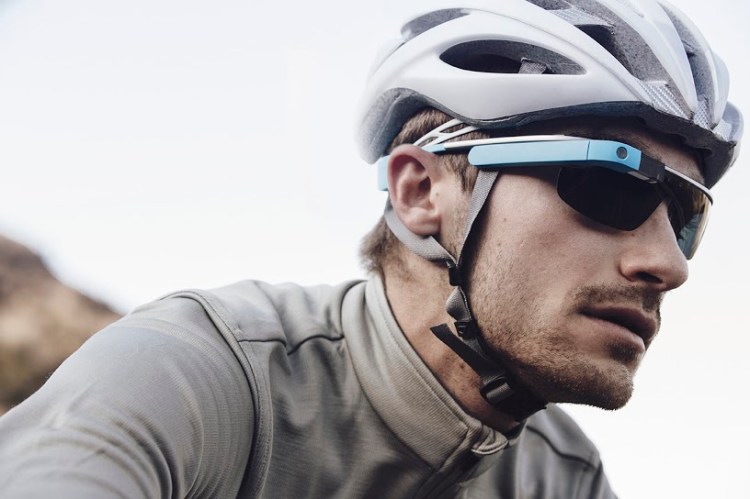
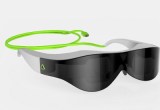




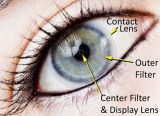


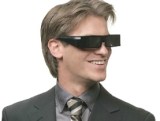

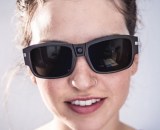

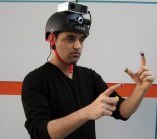









![Reblog this post [with Zemanta]](http://img.zemanta.com/reblog_e.png?x-id=b7bd7adf-8204-4850-b08a-6db584591759)
